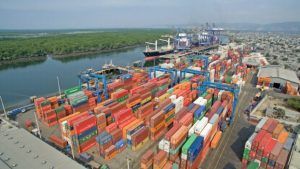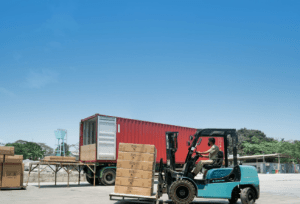Expanding your business beyond borders sounds glamorous until you’re knee-deep in customs paperwork at 2 AM, wondering why you ever thought this was a good idea. Yet despite the headaches, international expansion remains one of the most powerful growth strategies available to ambitious businesses. The question isn’t whether you should explore international markets. It’s whether you’re prepared to handle the logistical complexity that comes with it.
I’ve watched countless businesses stumble during international expansion, not because their product wasn’t good enough or their strategy was flawed, but because they underestimated the operational challenges of working across borders. The unglamorous reality of global business is that success often comes down to logistics, paperwork, and having reliable partners in places you’ve never visited.
This article isn’t about the why of international expansion. You already know the benefits of accessing new markets, diversifying revenue streams, and building a truly global brand. Instead, we’re focusing on the how, specifically the logistical considerations that can make or break your international ambitions. Whether you’re shipping products to Southeast Asia, establishing a physical presence in Australia, or anything in between, understanding the operational realities will save you time, money, and stress.
Understanding the Foundation: Why Logistics Matter More Than You Think
Most business leaders focus on the exciting parts of international expansion: new customers, bigger revenue projections, press releases about global growth. The logistics side gets treated as an implementation detail to figure out later. This is backwards, and it’s expensive.
Your logistics capabilities directly limit your international opportunities. You can’t promise two-day delivery if your shipping partner takes two weeks. You can’t expand into a new region if you can’t reliably get products to customers there. You can’t open a regional office if moving your team and equipment is prohibitively difficult or expensive.
Smart businesses flip this around. They start with logistics and build their international strategy on what’s actually possible, not what sounds good in a pitch deck. They identify regions where they can establish reliable supply chains before they commit to those markets. They understand the regulatory environment, shipping timelines, and cost structures before they promise anything to customers or investors.
This approach feels less exciting than just diving in, but it’s how you build sustainable international operations rather than a house of cards that collapses the first time something goes wrong (and something always goes wrong).

The Southeast Asian Opportunity: Emerging Markets and Logistics Realities
Southeast Asia represents one of the most compelling growth opportunities for businesses across industries. The region combines rising middle-class purchasing power, increasing digital adoption, relatively young populations, and improving infrastructure. Countries like Vietnam, Thailand, Indonesia, and Myanmar are seeing rapid economic development and increasing integration with global commerce.
But here’s what the opportunity reports don’t tell you: the logistics infrastructure in these markets varies wildly in quality and reliability. What works smoothly in Singapore might be a nightmare in more rural areas. Customs procedures that seem straightforward on paper become Byzantine in practice. Last-mile delivery that you take for granted in developed markets might be genuinely challenging in regions with limited address systems or difficult geography.
Myanmar specifically presents an interesting case study. The country has enormous potential with its strategic location between India and China, young workforce, and natural resources. However, it’s also experienced significant political instability and infrastructure challenges that complicate business operations. Any company looking at Myanmar needs to understand these realities upfront.
For businesses shipping products into or within Myanmar, having reliable logistics partners isn’t optional, it’s essential. The difference between a good courier service and a mediocre one isn’t just delivery speed. It’s whether your products actually arrive intact, whether customs clearance happens smoothly, and whether you have visibility into where your shipments are at any given moment.
International courier providers with established operations in developing markets bring enormous value beyond just moving packages. They understand local regulations, have relationships with customs officials, know how to navigate infrastructure limitations, and can provide the reliable tracking and customer service that businesses need to operate confidently. When evaluating Myanmar as a potential market, understanding your logistics options through established myanmar courier service providers should be part of your initial research, not an afterthought.
The cost structure matters too. Shipping to developing markets is often more expensive than you’d expect based on distance alone. Limited competition, infrastructure costs, and additional handling all contribute to higher prices. Building these realistic costs into your financial projections early prevents unpleasant surprises later. Many businesses have found that products profitable in their home market become marginal or money-losing when real international logistics costs are factored in.

Building Your International Supply Chain: Key Considerations
Once you’ve identified promising markets, building reliable supply chains becomes your next challenge. This isn’t just about finding the cheapest shipping option. It’s about creating systems that work consistently and can scale as your business grows.
Start with understanding regulatory requirements in your target markets. Import duties, taxes, product certifications, and labeling requirements vary by country and product category. What’s perfectly legal to sell in one country might require additional certifications or be prohibited entirely in another. Ignorance of these requirements is expensive; shipments can be held indefinitely in customs, returned at your expense, or simply confiscated.
Documentation is the unsexy backbone of international logistics. Commercial invoices, certificates of origin, packing lists, and product declarations need to be accurate and complete. Missing or incorrect documentation causes delays, additional fees, and frustrated customers. Investing time in understanding exactly what’s required for each market you serve prevents most common shipping problems.
Transit times are another critical consideration often underestimated by businesses new to international operations. That “7-10 business days” shipping time might not include customs clearance, which can add days or weeks depending on the country and time of year. Holiday periods, political events, and random bureaucratic delays all impact timelines. Building buffer time into your customer expectations and inventory planning prevents panic when things take longer than the theoretical minimum.
Your packaging strategy needs to account for longer journey times, more handling, and varying climate conditions. Products that arrive perfectly fine after domestic shipping might be damaged after the rougher handling and longer transit times of international routes. Investing in better packaging reduces returns and customer complaints, but it also adds weight and cost. Finding the right balance requires testing and iteration.

Establishing Physical Presence: When Digital Isn’t Enough
For many businesses, international expansion eventually means establishing physical presence in key markets. This might be a sales office, regional headquarters, distribution center, or full operational facility. The decision to move from purely digital operations to physical presence is significant and should be driven by clear business needs.
Physical presence offers advantages that digital-only operations can’t match. Face-to-face relationships still matter in many cultures and industries. Local presence demonstrates commitment to a market and builds trust with customers, partners, and regulators. Time zone overlap makes communication and collaboration easier. Local hiring provides cultural knowledge and language skills that remote teams struggle to replicate.
However, establishing physical operations internationally is complex and expensive. Real estate markets, employment laws, tax structures, and business regulations vary enormously by country. What seems simple in your home market might be bureaucratic nightmare elsewhere. Even basic questions like how to set up payroll or open a business bank account can have surprisingly complicated answers.
Australia represents an attractive market for international expansion, particularly for businesses targeting developed Asia-Pacific markets. The country offers political stability, strong rule of law, developed infrastructure, and proximity to Asian markets. Major cities like Sydney, Melbourne, Brisbane, and Perth serve as regional hubs for many international businesses.
Perth specifically has become increasingly important as Western Australia’s economy has diversified beyond mining into technology, advanced manufacturing, and services. The city offers lower costs than Sydney or Melbourne while maintaining quality infrastructure and lifestyle. For businesses needing presence in Australia, Perth provides an interesting alternative to the more obvious choices.
The practical challenges of establishing operations in a new city shouldn’t be underestimated, regardless of location. Beyond finding office space, you need to actually get there. If you’re relocating staff, moving household goods internationally is expensive and complicated. Even if you’re not moving people permanently, setting up an office requires moving furniture, equipment, and supplies.
For businesses establishing operations in Perth or relocating staff there, understanding the local logistics landscape is important. The city’s relative isolation on Australia’s west coast can complicate some aspects of moving and logistics compared to more connected cities. However, Perth has well-established moving services that understand both local conditions and international relocations. When the time comes for actually moving in Perth with removalists, working with experienced professionals familiar with the city makes the process substantially smoother, particularly if coordinating international shipments or relocating staff from overseas.
Managing Complexity: Systems and Partners
As your international operations grow, complexity scales non-linearly. Two markets aren’t twice as complicated as one; they’re exponentially more complex. Different regulations, time zones, currencies, languages, and cultural expectations all multiply the coordination challenges.
The businesses that scale internationally successfully do so by building systems and choosing partners wisely. They invest in tools and processes that bring order to chaos. They establish clear procedures for common tasks. They document what works and what doesn’t. Most importantly, they choose partners who make their lives easier rather than adding to the complexity.
Partner selection deserves careful consideration. In logistics, courier services, customs brokers, freight forwarders, and warehousing providers literally have your business in their hands. Their reliability, communication, and problem-solving capabilities directly impact your customer experience and operational stress levels. Choosing primarily on cost often proves expensive in the long run when shipments go missing, customs clearance stalls, or you can’t get answers about where your products are.
The same principle applies to other service providers. Choosing legal, accounting, real estate, and recruiting partners in new markets based on recommendations and proven track records beats going with the cheapest option every time. These partners should educate you about local practices, warn you about pitfalls, and generally make operating in unfamiliar territory less risky.
Technology helps manage complexity but can’t eliminate it entirely. Inventory management systems, shipping software, project management tools, and communication platforms all play important roles. However, they’re enablers, not solutions themselves. The best technology in the world can’t compensate for poor partner choices or fundamental strategic mistakes.
Risk Management: Expecting and Planning for Problems
International operations involve risks that domestic businesses simply don’t face. Currency fluctuations can turn profitable operations into money-losers overnight. Political instability can disrupt entire markets. Regulatory changes can make previously compliant products illegal. Natural disasters, port strikes, and pandemic-related disruptions all have larger impacts when your supply chain spans continents.
You can’t eliminate these risks entirely, but you can manage them strategically. Diversifying your markets reduces dependence on any single region. Building relationships with multiple logistics providers creates backup options if your primary partner encounters problems. Maintaining larger inventory buffers absorbs supply chain disruptions better. Currency hedging strategies can reduce exchange rate risks.
Insurance often gets overlooked but provides crucial protection. Shipping insurance, business interruption coverage, and political risk insurance all cost money but protect against expensive disasters. The question isn’t whether you’ll eventually face a major disruption (you will), it’s whether you’ll be adequately protected when it happens.
Communication planning for crisis situations deserves attention before problems occur. When something goes wrong, your ability to quickly communicate with customers, partners, and staff across time zones and language barriers becomes critical. Having plans and contact information ready means you’re solving problems instead of scrambling to figure out how to reach people.
The Long View: Building for Sustainable Growth
International expansion should be viewed as a long-term investment, not a quick growth hack. The businesses that succeed globally are those that patiently build reliable operations, establish strong relationships, and learn from inevitable mistakes without giving up.
Your first year operating in a new market will almost certainly be harder and more expensive than you projected. This is normal. You’re paying learning tuition in the form of mistakes, inefficiencies, and unexpected challenges. The businesses that succeed are those that expected this learning period and resourced appropriately for it.
Continuous improvement should be part of your international operations mindset. Regularly reviewing what’s working and what isn’t, gathering feedback from staff and customers in different regions, and being willing to change approaches keeps you competitive. The logistics provider or process that worked great three years ago might not be optimal for your current scale and needs.
Cultural learning is an ongoing process, not a one-time training session. Understanding how business gets done in different regions, what communication styles work, and how to navigate local customs takes time and humility. Empowering local staff to educate headquarters about regional realities creates better decisions and avoids expensive mistakes born of assumptions that don’t translate across borders.
The ultimate goal is building genuinely global operations where international business feels as natural as domestic operations once did. You’ll know you’re there when handling orders from multiple countries, coordinating across time zones, and managing international logistics feels routine rather than stressful. Getting there requires time, investment, good partners, and learning from mistakes along the way.
Moving Forward With Confidence
International expansion will never be simple or risk-free. Markets will always have unique challenges. Logistics will always involve complications. Regulations will continue changing. That’s not going to change, regardless of how sophisticated your operations become.
What changes is your capability to handle these challenges effectively. By building strong logistics foundations, choosing reliable partners, managing risks thoughtfully, and learning continuously, you create resilient international operations that can weather disruptions and capitalize on opportunities.
The businesses winning in international markets aren’t necessarily the ones with the biggest budgets or most aggressive expansion plans. They’re the ones that did the unglamorous work of building reliable operations, understanding local markets deeply, and creating systems that work even when things get complicated.
Start small, learn fast, choose partners carefully, and build for the long term. That’s the playbook for international success, regardless of whether you’re shipping products to Myanmar or opening an office in Perth. The specifics vary by industry and market, but the underlying principles remain constant.
Your international journey will have frustrating moments, expensive mistakes, and days when dealing with customs paperwork at midnight makes you question your life choices. But it will also open opportunities, relationships, and business possibilities that simply don’t exist within your domestic market. Done right, international expansion transforms good businesses into great ones. The key is approaching it with eyes open about the challenges and commitment to building operations that can handle them.

